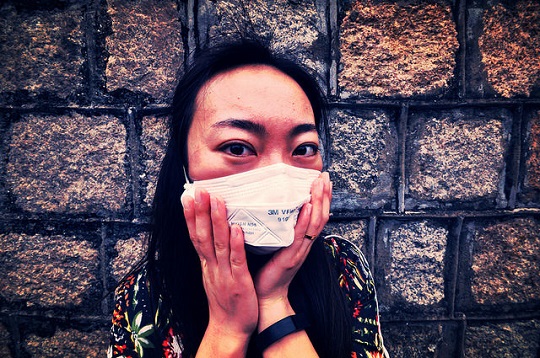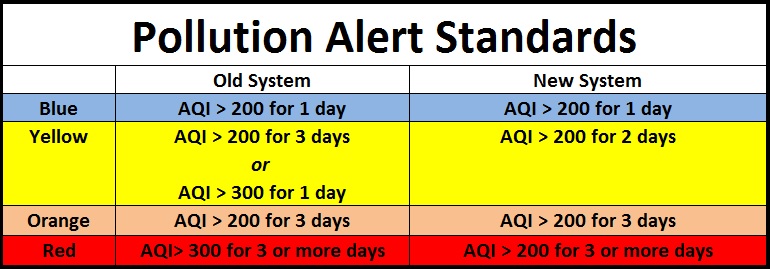
The Beijing city government announced a more stringent air quality control warning system earlier this week, suggesting but not mandating that schools close when the AQI is forecasted to be over 200 for three days in a row.
According to CCTV News, the stricter warning system was enacted Tuesday in an effort to mitigate bad air.
Under the previous warning system, instituted in October 2013, the most serious measures – mandatory odds and evens car restrictions, compulsory factory shutdowns, and suggestions that schools shut down – would kick in when the AQI was forecasted to be over 300 for more than three days in a row. Under the new standard, that limit is now reduced to AQI 200.
The old and new systems both have four levels – Blue, Yellow, Orange, and Red, in order of severity. According to the Global Times, in 2014 Beijing issued a Blue alert 11 times, a Yellow alert five times, Orange alerts twice, and never called for a Red alert.


None of the school-related rules are mandated, but rather are "suggested" which leaves it up to individual administrators to decide based on their own pollution policies.
The Ministry of Education also has the power to order public schools closed under a red alert. While private international schools are not directly governed by the Ministry, they do need them to get things done and will likely follow their lead.
The school related "suggestions" at each warning level is as follows:
Blue: Students are suggested to reduce outdoor activity.
Yellow: Schools are suggested to cancel all outdoor classes and activities
Orange: Same as Yellow
Red: Schools are "suggested" to close for the day
Given the fact that air pollution is notoriously difficult to predict, a warning system based on predictions three days out has limited effectiveness.
In fact the system seems designed to have a built-in excuse – "we didn’t think it would be so bad."
With the benefit of hindsight, we can see that in reality Beijing’s AQI exceeded 300 for three consecutive days on two separate occasions last year, according to the Ministry of Environmental Protection’s historical data: From February 14-16, 2014 and again on October 8-10, 2014.
Neither time was a red alert issued, presumably because it was not predicted to be so bad.
Under the new stringent system, Beijing would have technically been in Red alert territory six times in 2014 (Jan 13-15, Feb 13-17, Feb 20-25, Mar 24-27, Oct 7-11, and Oct 18-20). If forecasted properly, that would mean that odd/evens plate restrictions and massive plant closures would have been put into effect, and the Ministry of Education could have ordered schools closed.
Shutting factories and such seems imminently doable, but forcing half the cars off the roads on short notice seems an almost impossible-to-enforce task.
Rules that call for the shuttering of schools on bad air days are well intentioned but entirely impractical for all those that don’t have additional relatives or hired help at home to take care of their children during the day.
In addition, at this point its worth considering if the filtered air in many of the well-run international schools in Beijing could conceivably better than the air at many students’ homes, meaning the students would be better off in school.
The city government issues the pollution alert via multiple channels, including TV, radio, newspapers, the internet, and text messages. Red and orange alerts are to be released 24 hours in advance, though they did not state 24 hours from what hour of the day. Yellow alerts will be issued "in advance" and blue alerts will be released "in a timely manner."
In an effort to clear all this up, we called 12345, the Beijing City General Hotline for Non-Emergency Issues, listed by the city government as the place to call for updates on pollution alerts. The person on the other end of the phone said they he had no idea what time alerts were issued, and would look it up and call us back. He called back later, but did not have a specific answer.
Of course all of this leaves many questions unanswered. What if, for example, a red alert is announced 24 hours in advance, school is cancelled and odds/evens restrictions are put in, but we wake up the next morning and the air has cleared? Is school back on and can both odds and evens drive?
We’ll fill you in as news come in, but confusion continues to reign for now.
Image: Flickr user Azchael



